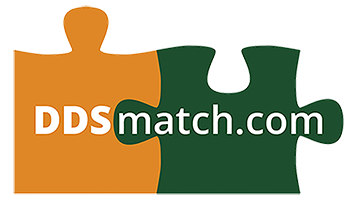Inflation continues to affect every business, and overhead benchmarks are edging upward in the profession. But a solid dental enterprise may operate at targeted 65% overhead, and it’s vital to know how you measure up. Location, practice type, and regional staffing availability are some of the factors that influence total operating costs, but every practice has opportunities to capture savings in specific areas.
For example, take a solo practice that’s collecting $1 million annually. At 65% overhead, there’s $350,000 left for the owner. But every 1% decrease in costs pushes $10,000 to the bottom line. Consider how $100,000 in profits with a 10% reduction in overhead changes the trajectory of the doctor’s goals. And there are many practices that can enjoy similar results with the right knowledge and plan.
Any Time Frame Matters
Time favors those who understand the power of increasing net income. Whether you have two years to add $200,000 more to your retirement or ten years to invest another $1 million, the future looks and feels different. Controlled overhead bolsters your plan without adding more patients, operatories, or clinical days.
Many dentists are surprised to learn that cutting overhead isn’t just about enjoying more investment funding. Every dollar in reduced overhead may translate into $5 or more when you sell, too. If you trim supplies, merchant services fees, and unused subscription costs to save $4,000 a month, practice value may increase by $250,000 in some cases.
Here are three ways we’ve seen overhead get away from busy practitioners, and action steps you can take today to recapture unnecessary expenses.
1. Unmonitored Overhead Percentages
It’s vital to track internal practice metrics, but they don’t tell the whole story. Many dentists know their production, collections, and new patient count, and they monitor their bank accounts. But comfortable numbers can result in less ongoing analysis of deeper ownership numbers, and today’s inflationary trends add pressure on net income even when revenues increase. Dentists should develop a thorough understanding of the costs behind operations and how they’re affecting profitability.
Most dentists are familiar with general overhead targets in key categories, and those numbers can vary across different practices and regions. But savvy business owners always look for ways to make incremental gains. For example, administrative costs include business supplies, postage, and more. It’s possible to reduce costs by reviewing existing contracts or eliminating services you no longer need. Dentists often find merchant service fees are much higher than necessary, or better inventory management can lower supply costs.
ACTION: Use a dental CPA to provide detailed P&L reports with an analysis of expenditures, and discuss areas of improvement that improve patient care. Take this information to a practice transition specialist and explore exit planning options based on today’s numbers so you have a starting point.
2. No-Show Tolerance
Short-notice cancellations and no-shows erode daily production and morale. You incur costs whether you’re serving a patient or not, and no-shows amplifies the cost of staff, utilities, and rent; overhead increases, and you need higher future production to hit expected targets.
It’s not uncommon to find a 15% open rate in most practices due to missed or unfilled appointments. Proactive practices can drive this to 5% or less, and lower is better. For example, If 5% of your appointments are unfilled, you’ll still work an extra six months every ten years to make up for it.
ACTION: Evaluate the messaging that patients hear, and emphasize “reserved time just for them.” Subtle psychology that adds exclusivity to appointments can be part of electronic reminders that reach patients through calls, texts, or emails. Consider analytical tools like Dental Intelligence software that monitor metrics in real-time and help teams manage vital insights in real-time.
3. Stagnant Master Fee Schedule
Costs will continue to rise regardless of the overall economic picture, and today’s inflationary trends eat away at the bottom line. Many practices are dealing with staffing challenges, and surveys that dentists currently hiring find that it’s very or extremely challenging. Employees expect cost-of-living wage increases, and retaining current teams requires salary adjustments in most areas.
Practices that fail to raise fees regularly find that rising costs drive overhead higher, and more production may simply mean treading water. Consider a 3-5% master fee increase in January, and generally aim for fees that hit the 80th percentile. If you fall behind a year or two, you may find it takes a double digit increase to reach the acceptable level. Increased expenses without increases in revenue adds to ownership stress.
ACTION: Analyze your fee schedule and pick a date to activate a fee increase, and consider consulting with PPO Advisors for a Master Fee Analysis. They can also provide a complimentary PPO Analysis, help with credentialing, and negotiate fees with carriers.
Control Dental Practice Overhead And Prosper
It’s easy to overlook overhead during your busy practice days, but they quietly drain profits over time. But you’ll add profits to the bottom line without extra clinical hours every time you plug an overhead leak.A nd every dollar that’s invested now compounds for a better exit later.
Most dentists don’t realize how net income drives the value of their practice. A practice producing $2 million annually may not be worth more than a practice producing $1.5 million. Overhead management helps determine profitability, and profitability significantly impacts future valuation.
We can help you gauge your current overhead and valuation, and we may have suggestions that add to your practice value as you develop an exit strategy. Contact us for a complimentary analysis to review your practice’s financials and discuss adjustments that can improve profitability now and increase practice value when you’re ready to sell.
